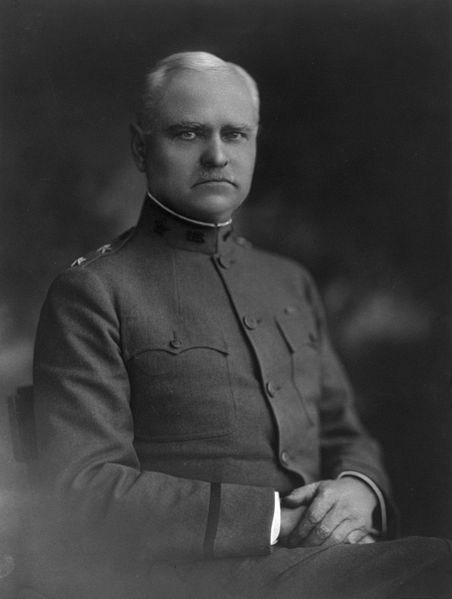<Back to Index>
- Engineer George Washington Goethals, 1858
- Sculptor Hiram Powers, 1805
- 1st Prime Minister of Imperial Russia Count Sergei Yulyevich Witte, 1849


George Washington Goethals (June 29, 1858 – January 21, 1928) was a United States Army officer and civil engineer, best known for his supervision of construction and the opening of the Panama Canal. The Goethals Bridge between Staten Island, New York City and Elizabeth, New Jersey, is named in his honor, as is the Goethals Medal.
Goethals was born in Brooklyn, New York, to Flemish (Stekene-Flanders-Belgium) immigrants Johannes Baptista (John Louis) Goethals, a carpenter, and wife Marie Le Barron. Aged 14, he entered the College of the City of New York. In April 1876, after three years of college, he won an appointment to the United States Military Academy at West Point. There, he was a member of the Delta Upsilon fraternity. He graduated second in his class in 1880, a distinction that led that year to a commission as second lieutenant in the Army Corps of Engineers. Goethals remained at the military academy during the summer and fall of 1880 as an assistant instructor in practical astronomy. In 1881 he attended the Engineer School of Application at Willets Point, New York. His first field assignment came in the following year with his appointment as engineer officer of the Department of Columbia in Vancouver, Washington. His routine duties included reconnaissance, surveys, and astronomical work, while his most consequential project was the replacement of a 120-foot bridge across the Spokane River.
In September 1884 he transferred to Cincinnati, Ohio, as an assistant to Lieutenant Colonel William E. Merrill, who was in charge of the navigational improvements of the Ohio River. Goethals worked his way up from rodman on the hydrographic surveys to foreman of concrete work and, finally, to chief of construction. Also in 1884 he married Effie Rodman; they had two children. From 1885 to 1889 he taught civil and military engineering at West Point. He returned to the field in 1889 to assist Colonel John W. Barlow with navigational improvements on the Cumberland and Tennessee rivers. While an instructor at West Point Goethals agreed to tutor Charles Young who graduated in 1889 after being reexamined in engineering.
In 1891 Goethals was promoted to captain and placed in charge of the completion of the Muscle Shoals Canal along the Tennessee River near Chattanooga. This was his first independent command, and his responsibilities included the design and construction of the Riverton Lock at Colbert Shoals. Goethals's recommendation of a single lock with an unprecedented lift of twenty-six feet was initially opposed by his superiors in Washington, and he was forced to persuade the conservative army engineers of the merits of his design. The success of the Riverton Lock inspired the eventual adoption of high-lift locks elsewhere, including those for the Panama Canal.
During the Spanish-American War he was lieutenant colonel and chief of engineers of United States Volunteers. In 1907 US President Theodore Roosevelt appointed George Washington Goethals chief engineer of the Panama Canal. The building of the Canal was completed in 1914, one year ahead of the target date of June 1, 1916. Colonel Goethals received unstinted praise from visiting engineers and from the technical press of the entire civilized world. In 1913 the degree of LL.D. was conferred on him by the University of Pennsylvania, and in the spring of 1914 he was awarded medals by the National Geographic Society, the Civic Forum (New York), and the National Institute of Social Sciences. President Wilson appointed him the first Civil Governor of the Panama Canal Zone.
He resigned from the post of Governor of the Canal Zone in 1916 and was made chairman of the board of inquiry in regard to the Adamson eight-hour law. His positions thereafter were: State engineer of New Jersey in 1917, manager of the Emergency Fleet Corporation (briefly), acting quartermaster of the United States Army, and a member of the War Industries Board (1918). In 1919, he requested his release from his active service. Later on, he headed an engineering and construction firm. He became the first consulting engineer of the Port of New York Authority (now the Port Authority of New York and New Jersey), and the Goethals Bridge, one of the authority's bridges between New York and New Jersey, was named for him. He died in New York City.
He is the great-great-grandfather of actress Angela Goethals.
In World War II the United States liberty ship SS G. W. Goethals was named in his honor. He has one street named for him in the city of Richland, Washington. Another one named Goethals Avenue in Queens, New York City at St John's University.